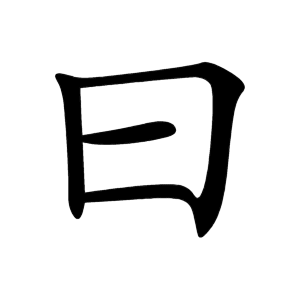曰
- to say, to speak;
Etymology
The character is composed of a horizontal stroke enclosed in a box-like shape, symbolizing speech or declaration. It is an ideogram depicting speech coming out of a mouth.
In ancient forms, it looked like a ᄇ-shaped character (resembling a mouth) with an added stroke on top, representing speech. During the oracle bone script era, it split into two variations: one with a central dot and one with a horizontal stroke on the right. The latter became standard in bronze inscriptions, and in seal script, the stroke transformed into a ᄂ shape. In clerical script, this ᄂ shape became a straight horizontal stroke on the right, and finally, in regular script, that stroke was duplicated on the left as well, giving us the modern form 曰.
Its reconstructed Old Chinese pronunciation is/*ɢwat/, and it's thought to be etymologically related to 話 (to speak).
Usage in Korean
Though it means "to say", 曰 is used almost exclusively in high-register, formal, or classical contexts—similar to an honorific.
For example:
• In the Korean Bible translation, "Jesus said" is translated as "예수께서 대답하여 가라사대" using 曰.
• In Confucian texts, "공자님 가라사대" (Confucius said) also uses 曰.
Additional notes
Similar shape characters
Characters with 曰
- 日 (A)
- 難日 (XA)
- ⿴ 囗 一
